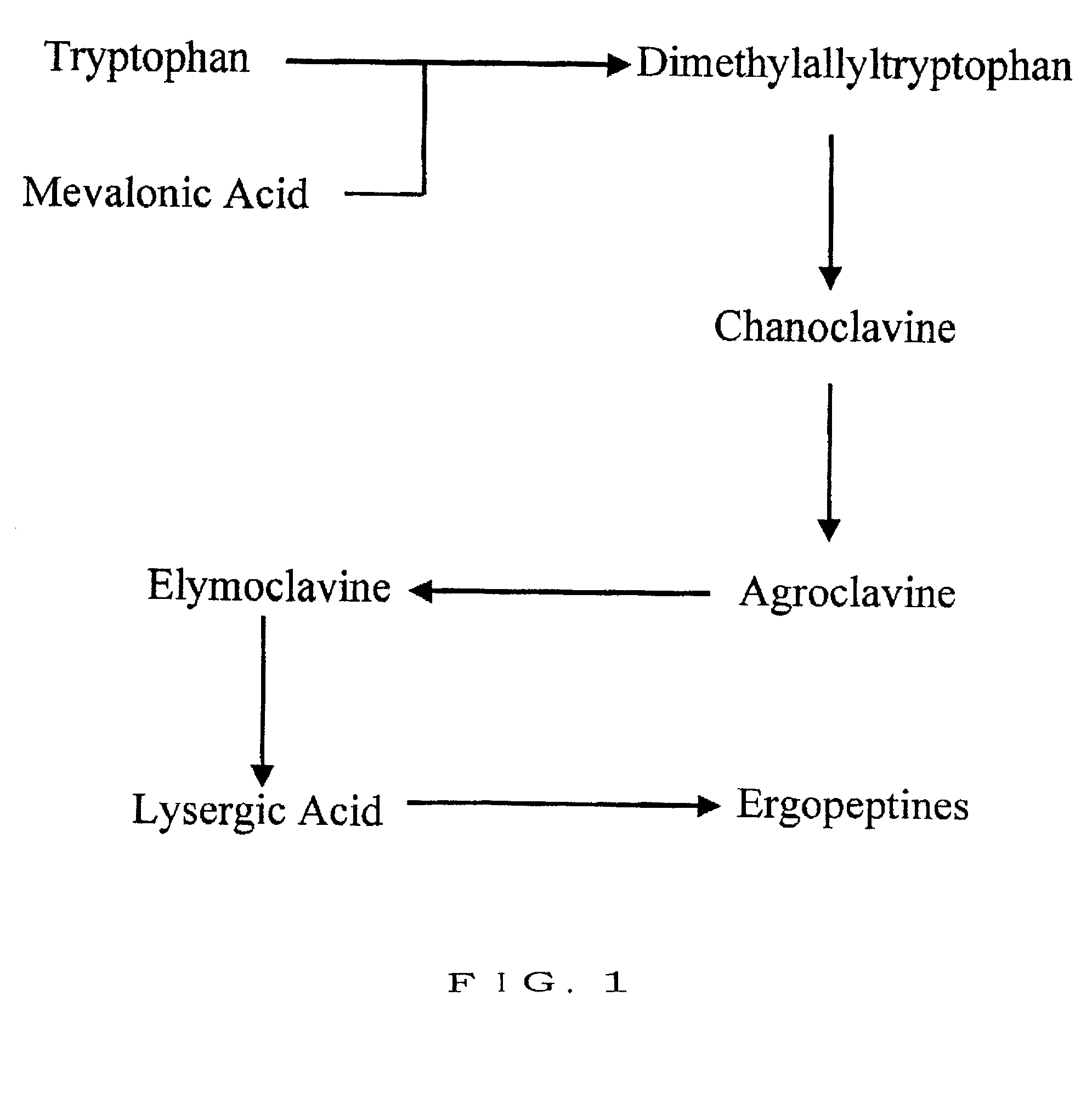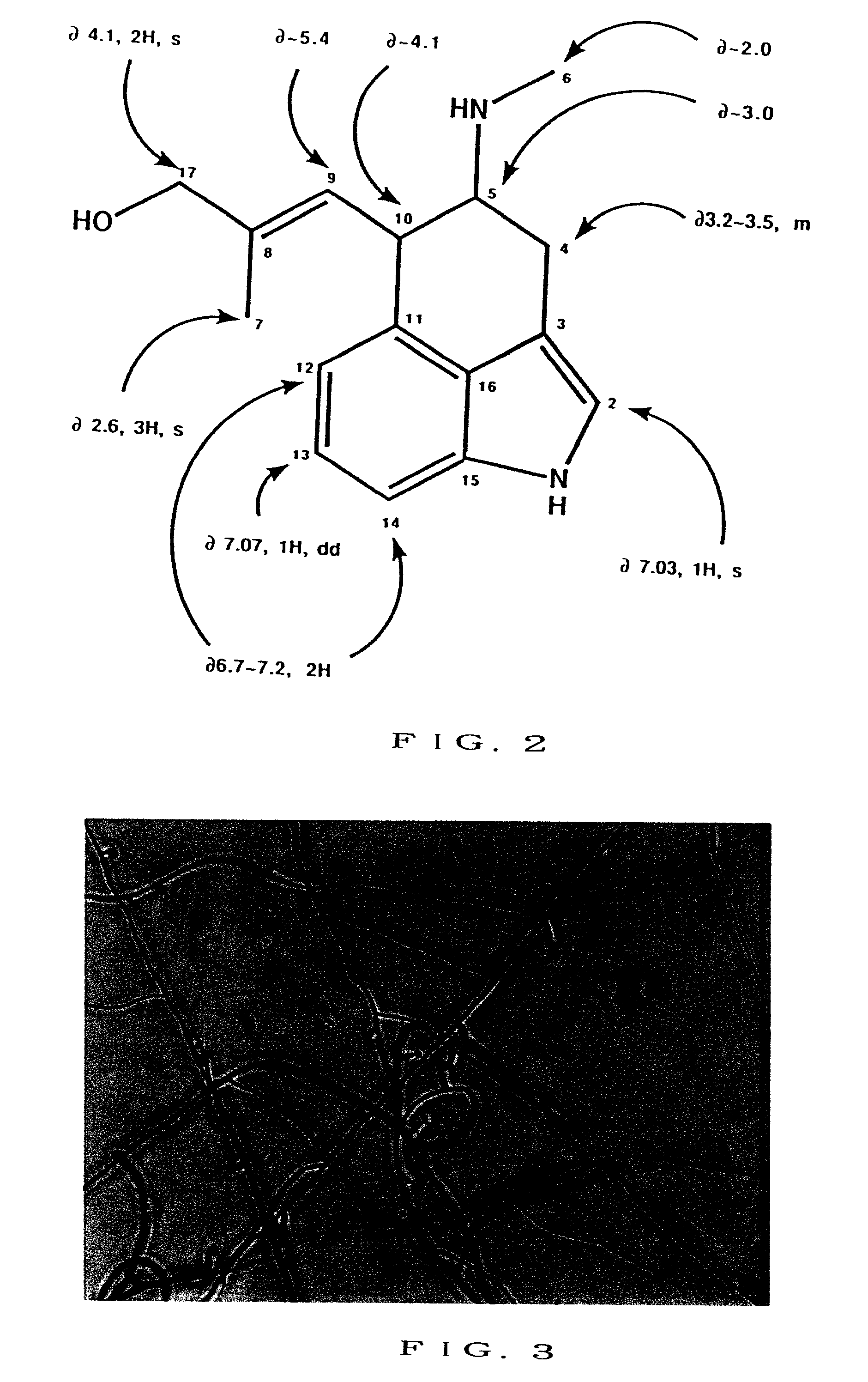Symbiotic fungus, plants into which a symbiotic fungus is artificially introduced, and method of introducing symbiotic fungus into plants
a technology of symbiotic fungus and artificial introduction, which is applied in the direction of fungi based processes, microorganisms, biocide, etc., can solve the problems of toxicity, no longer moving, and may starve to death of plants infected by symbiotic endophytes, etc., to achieve excellent pest resistance, no toxicity risks, and strong resistance to pests
- Summary
- Abstract
- Description
- Claims
- Application Information
AI Technical Summary
Benefits of technology
Problems solved by technology
Method used
Image
Examples
example 1
[0069] (1) Analysis of Fungi
[0070] To isolate the endophyte from the plant, the leaf and leaf sheath were washed with water, immersed in a 70% aqueous solution of ethanol for 10 seconds, immersed in a 2.5% aqueous solution of sodium hypochlorite for 10 minutes, washed three times with sterile water, transferred to an endophyte isolation culture, and cultured in the dark at 25.degree. C.
[0071] The isolation culture was prepared by sterilizing PDA (potato dextrose agar) adjusted to pH 5.6 at 121.degree. C. for 15 minutes, adding 100 mg / l each of penicillin and streptomycin, and pipetting 20 ml portions into plastic Petri dishes of diameter 9 cm.
[0072] After approx. 3-8 weeks, the mycelium was isolated from an explant, and the colonies were removed by a cork borer of diameter 5 mm, transferred to a PDA culture and corn meal agar culture, and grown.
[0073] (2) Classification and Identification of Endophytes by Using the Flat Plate Culture Method
[0074] The mycelium transplanted to the PDA...
example 2
[0124] In this example, endophytes prior to infecting the plant were screened for by the screening method (7) of Embodiment 1, and endophytes which biosynthesized chanoclavine and which produced chanoclavine as the final metabolic product were selected. The symbiotic fungi screened for in this way were then used to infect the same plants as those of Embodiment 1 by the method of (4) of Embodiment 1, i.e., the grasses Agrostis, Festuca, Poa and Lolium. When screening was performed according to the method of (6) of Embodiment 1, it was confirmed that the plants were infected with symbiotic fungi producing chanoclavine as the final metabolic product. When pest resistance tests were performed on these plants according to the method of (10) of Embodiment 1, it was found that a substantially identical effect to that of Embodiment 1 was obtained.
[0125] Having described specific embodiments of this invention with reference to the accompanying drawings, it is to be understood that the invent...
PUM
| Property | Measurement | Unit |
|---|---|---|
| radius | aaaaa | aaaaa |
| thickness | aaaaa | aaaaa |
| width | aaaaa | aaaaa |
Abstract
Description
Claims
Application Information
 Login to View More
Login to View More - R&D
- Intellectual Property
- Life Sciences
- Materials
- Tech Scout
- Unparalleled Data Quality
- Higher Quality Content
- 60% Fewer Hallucinations
Browse by: Latest US Patents, China's latest patents, Technical Efficacy Thesaurus, Application Domain, Technology Topic, Popular Technical Reports.
© 2025 PatSnap. All rights reserved.Legal|Privacy policy|Modern Slavery Act Transparency Statement|Sitemap|About US| Contact US: help@patsnap.com



